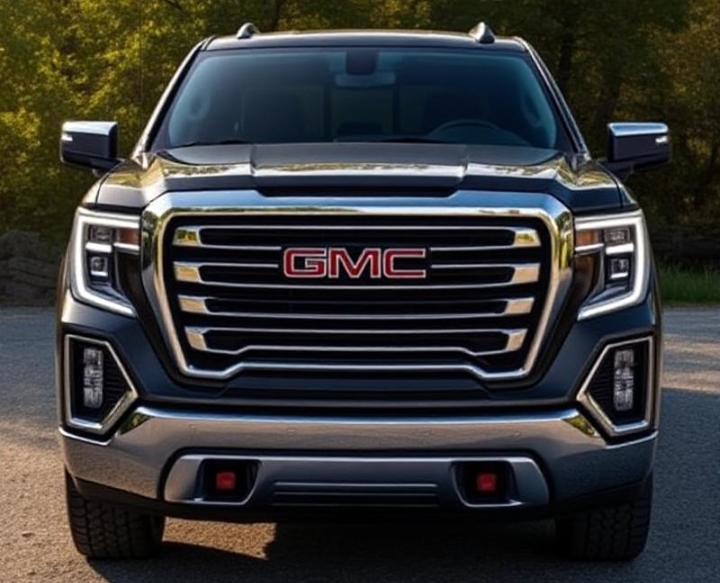The Tiny Titan: Tracing the Evolution of the Fiat Seicento
The Fiat Seicento, a name that whispers tales of nimble city driving, budget-conscious motoring, and an enduring presence on European streets, might not possess the roaring charisma of a supercar or the rugged capability of an SUV. Yet, its story is one of remarkable longevity, adaptation, and a quiet success in serving a specific market need. Born from a desire to replace a beloved but aging predecessor, the Seicento evolved through a series of iterations, each attempting to refine its core principles of affordability, practicality, and urban agility. This article delves into the fascinating evolution of the Fiat Seicento, exploring its production years, the diverse models and trim levels that defined its journey, and its lasting legacy.
The Genesis: Replacing a Legend – The Fiat Cinquecento (1991-1998)
To understand the Seicento, we must first acknowledge its direct ancestor, the Fiat Cinquecento. Launched in 1991, the Cinquecento was a brave departure from the classic, rear-engined “Nuova 500.” It adopted a more modern, front-wheel-drive, hatchback layout, designed with a focus on safety, interior space, and fuel efficiency. Its quirky, angular styling, however, was divisive. Despite this, it carved out a significant niche as an affordable, entry-level car. The Cinquecento offered a range of engines, primarily 899cc and 1108cc petrol units, with various trim levels like the S, SX, and Sporting capturing the attention of budget-conscious buyers and new drivers.
The Dawn of a New Era: The Fiat Seicento (1998-2010)
In 1998, Fiat unveiled the car that would bear the name Seicento, meaning “six hundred” in Italian, a nod to its spiritual predecessor. While bearing a strong visual resemblance to the Cinquecento, the Seicento was more than just a facelift. It represented a significant evolution, aiming to address the Cinquecento’s shortcomings and modernize its appeal.
1998: The Launch and Initial Models
The initial Seicento lineup was built upon the established platform of the Cinquecento, but with a host of improvements. The most noticeable change was the styling. While still compact and undeniably cute, the Seicento’s design was smoothed out, with more rounded headlights, a revised grille, and a cleaner overall aesthetic. The interior also received attention, with better materials and a more ergonomic layout.
Two primary engine options were on offer at launch:
- 1.1 MPI (Multi-Point Injection): This 1108cc four-cylinder engine, producing around 54 horsepower, was the workhorse of the Seicento range. It was designed for economical city driving, offering a good balance of performance and fuel efficiency.
- 0.9 MPI: A smaller, 899cc engine, offering around 40 horsepower, was also available, primarily targeting the most budget-conscious buyers and markets where taxes favored smaller engines.
The initial trim levels reflected a tiered approach to affordability and features:
- S (Standard): The base model, offering essential features for everyday driving. This typically included manual windows, basic radio preparation, and a functional interior.
- SX: The mid-range option, adding a touch of comfort and convenience. This often included features like electric front windows, a central locking system, and perhaps a more advanced audio system.
- Sporting: This performance-oriented trim was a popular choice, injecting a dose of youthful energy into the Seicento. The Sporting model typically featured a slightly more powerful version of the 1.1 MPI engine (often tuned for a few more horsepower), sportier suspension, alloy wheels, distinctive body styling (including fog lights and a rear spoiler), and a rev counter.
Early Refinements and Special Editions (Late 1990s – Early 2000s)
In the years immediately following its launch, Fiat introduced minor updates and special editions to keep the Seicento fresh. These often involved subtle styling tweaks, new color options, and variations in trim levels. Examples might include the “Suite” or “Hobby” editions, which offered bundled accessories or specific interior enhancements. The core engine and transmission (a 5-speed manual) remained largely consistent.
.
THIS is GOOD stuff if your car is in need:

.
2001: The First Major Facelift – Enhanced Appeal and Safety
The year 2001 marked a significant turning point for the Seicento with its first substantial facelift. This update aimed to modernise its appearance, improve its safety credentials, and address some of the criticisms of the earlier models.
The exterior received a more pronounced makeover. The front-end was redesigned with a more prominent grille, integrated bumper, and a revised headlight design that gave the car a more contemporary and less “bug-eyed” look. The rear also saw subtle changes, including updated taillights.
Inside, the improvements were even more noticeable. The dashboard was redesigned with a more modern layout, improved ergonomics, and a greater use of softer-touch materials. The aim was to create a more pleasant and refined cabin experience commensurate with its competitors.
Critically, safety was a major focus of this facelift. The car was re-engineered to meet updated safety standards, with improved crumple zones and the introduction of ABS (Anti-lock Braking System) as an option or standard on higher trims. Driver and passenger airbags became more commonplace.
The engine lineup remained largely the same, with the 1.1 MPI continuing its reign. However, the trim levels were adjusted to reflect the updated features:
- S: Still the entry-level offering, but with the improved interior and safety features.
- SX: Benefiting from the facelift’s enhancements, the SX offered a more comfortable and feature-rich experience, often including air conditioning as an option.
- Sporting: This trim continued to be the enthusiast’s choice, further refined with the updated styling and retaining its sportier characteristics.
2004: The Second Facelift – A Stronger Identity and the Arrival of a New Engine
In 2004, Fiat introduced another significant update to the Seicento, this time with a greater emphasis on differentiating it from the Cinquecento and projecting a more robust image. The car was effectively rebranded as the Fiat 600 in some markets, though the Seicento nameplate persisted. This facelift brought some of the most substantial changes to the model’s life.
The exterior was again significantly revised. The front bumper was reshaped, the grille received a new design, and the headlights were given a more aggressive, swept-back appearance. Side moldings were often incorporated, and the overall impression was of a more substantial and modern vehicle, despite its diminutive size.
The most exciting development in 2004 was the introduction of a new engine option:
- 1.3 JTD (MultiJet Diesel): This modern turbodiesel engine, offering around 75 horsepower, was a game-changer for the Seicento. It provided significantly improved performance and, importantly, much better fuel economy, making it an attractive proposition for those covering more miles or seeking a highly economical option. This engine was a testament to Fiat’s growing expertise in diesel technology.
The trim levels were reorganized to accommodate the new engine and updated features:
- Pop: A new entry-level trim, likely replacing the “S,” focusing on essential features and maximum affordability.
- Active: A mid-range option, offering a balance of comfort and practicality.
- Dynamic: A more well-equipped trim, likely including features like alloy wheels and improved interior trim.
- Sporting: The popular Sporting model continued, now often available with the 1.1 MPI engine or, in some instances, a detuned version of the 1.3 JTD for a unique blend of economy and performance.
This facelift was a crucial step in extending the Seicento’s lifespan, allowing it to compete more effectively in the evolving city car segment.
Late 2000s: Maintaining Momentum and Special Editions
In the final years of the Seicento’s production, Fiat continued to offer a range of models and trims, often with a focus on value and specific market demands. While major mechanical changes were unlikely, cosmetic updates, special editions, and package deals were common.
- Variations on a Theme: Trim levels like “Cool,” “Fresh,” and “Njoy” emerged, often bundling popular options like air conditioning, metallic paint, and upgraded audio systems at competitive prices.
- Continued Engine Options: The reliable 1.1 MPI petrol engine remained a staple for its affordability and ease of maintenance. The 1.3 JTD diesel was still offered, particularly in markets where diesel power held strong appeal.
- Focus on Economy: As the automotive industry faced increasing pressure for emissions and fuel efficiency, the Seicento, with its small engines and lightweight construction, naturally appealed to buyers prioritizing these aspects.
2010: The End of an Era
After a remarkable 12-year production run, the Fiat Seicento (and its rebranded Fiat 600 iteration) rolled off the production line for the final time in 2010. Its demise was a natural consequence of evolving market demands, stricter safety regulations, and the emergence of newer, more sophisticated city cars from Fiat itself, notably the Fiat 500 and later the Fiat Panda.
The Seicento’s Legacy: More Than Just a Small Car
The Fiat Seicento, while often overlooked in the grand narrative of automotive history, deserves recognition for its significant contributions.
- Affordability and Accessibility: It provided an entry point into car ownership for countless individuals and families across Europe, offering a reliable and economical mode of transport.
- Urban Agility: Its compact dimensions and nimble handling made it an ideal companion for navigating congested city streets, a trait that remains highly valued.
- Durability and Simplicity: The Seicento was a mechanically straightforward car, making it relatively easy and inexpensive to maintain, further cementing its appeal as a practical choice.
- A Bridge to Modernity: The Seicento served as a crucial evolutionary step for Fiat’s city car offerings, transitioning from the older Cinquecento to the more modern Fiat 500 and Panda. It absorbed lessons learned and paved the way for its more stylish successors.
Models and Trim Levels Recap:
While the exact nomenclature and feature sets could vary slightly by region and year, the core models and trim levels of the Fiat Seicento evolved as follows:
Early Models (1998-2001):
- Engines: 0.9 MPI, 1.1 MPI
- Trim Levels: S, SX, Sporting
Post-2001 Facelift:
- Engines: 1.1 MPI
- Trim Levels: S, SX, Sporting (with potential for special editions like Suite, Hobby)
Post-2004 Facelift (including Fiat 600 rebranding):
- Engines: 1.1 MPI, 1.3 JTD (MultiJet Diesel)
- Trim Levels: Pop, Active, Dynamic, Sporting (with potential for further special editions like Cool, Fresh, Njoy)
The Fiat Seicento, in its various forms, was a testament to Fiat’s ability to produce cars that were both practical and affordable. It proved that a small car could be more than just basic transportation; it could be a reliable, economical, and even enjoyable partner for everyday life, leaving a quiet but indelible mark on the landscape of European motoring.







